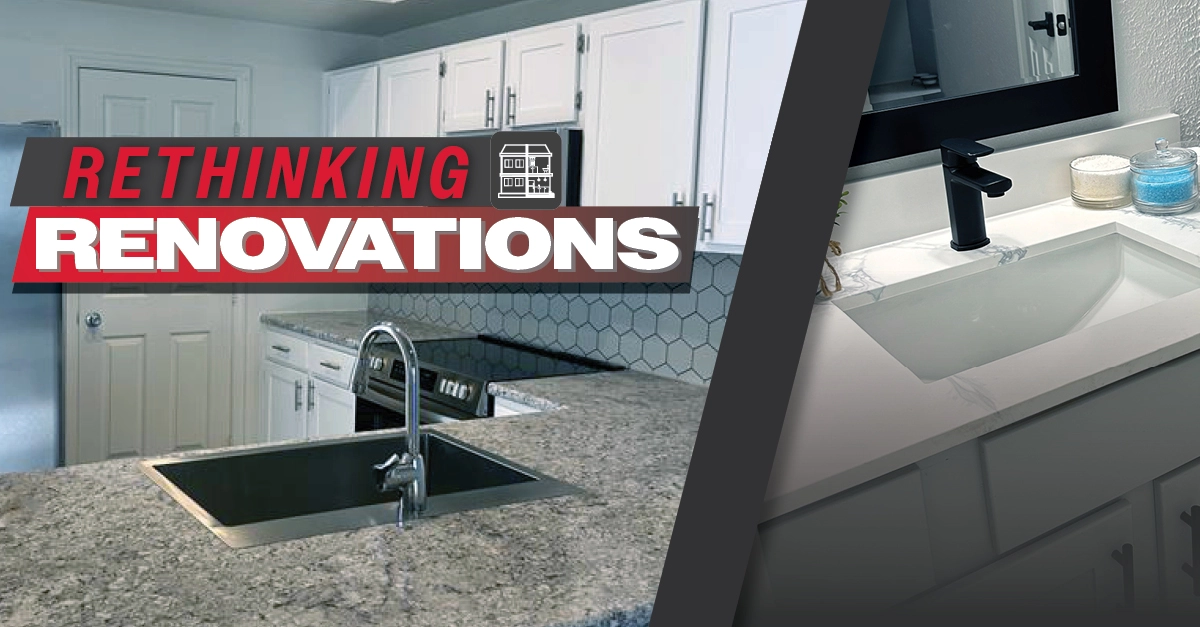5 Tips for Successful Community Upgrades

Community updates can be one of the most rewarding ways to increase income potential and protect ROI. These projects, no matter how big or small, can also be a source of surprises and challenges. In this article, a veteran property manager shares 5 tips that lead to successful renovation projects.
Community upgrade. Property update. CapEx project. Unit refresh… However extensive it is, a multifamily renovation project delivers significant short- and long-term opportunities as well as unexpected challenges. To realize a reliable and predictable return on a capital investment, it helps to have a solid plan in place, a realistic, yet flexible budget, and a proactive project team you can trust.
1 - Plan to Finish on Time - or Sooner
The moment you begin a capital expense community upgrade, the clock starts ticking. Every unit refresh plan has a built-in timeline that starts when the work begins and ends when that unit is rented. Stretch that timeline too long, and the project won’t pay off soon enough. Purposeful preparation makes a big difference.
- Know your deadlines before you begin. Timelines and the benchmarks in those timelines will set the pace for success.
- Find ways to be more efficient and finish faster with each unit.
- Expect delays and challenges; build flexibility into the initial timeline.
- Prepare a second “make ready” board; one is for standard turns, the other for the renovation. That’s an easy way for everyone to know what’s going on, where, and when.
List each aspect of the project: plumbing, flooring, electrical, carpentry, all of it. Know which contractor will do that specific scope of work, what their timeline is, and who to call in a crisis. You never want to be in a situation where something needs to happen, and you don’t know who to call.
2 - Be Proactive, Not Reactive
It’s good to have a standard checklist, but understand every property is different. Sometimes similar floor plans can have big differences. The more you know your property and recognize those nuances, the better prepared you will be for potential surprises.
- Walk the entire property to uncover potential issues.
- Where is the water shutoff for each building? Some may be different. Make sure contractors know where each one is before they begin.
- If there’s a transformer room, where is it? Don’t wait until an emergency happens to answer that question.
- Floor plans can change, and a small anomaly can create a snowball effect if it catches you by surprise.
- Know ahead of time where you will store materials.
Be out on the property as much as possible. Walk units as much as you can. You will find potential problems in time to stop them from happening, and you will be in a better position to judge how the project is going. The end goal is to have a competitive property that delivers a real “wow” factor to residents. Be sure to get out of the office and go see for yourself.

3 - Invest in Key Relationships
The renovation project manager will be your right hand. Keep that line of communication open, flowing, and healthy.
- Set expectations early, discuss the project in detail.
- Walk the property together to determine actual measurements.
- Be sure that every aspect of the project is clear to each of you.
- Meet weekly, discuss pain points, surprises, and challenges that may require a shift in strategy.
You will have multiple vendors and suppliers, and each one is important to the project’s success.
- Budget matters, but “cheapest” is not always “best.” Finding the right combination of value and reliability will protect the budget throughout the process.
- Build relationships with the people, not just their system.
- Know exactly who to call and what to do if something goes wrong.
- Get to know local government employees, especially at the permitting office.
- Who are the decision makers?
- What is the proper way to complete the permitting process?
- Knowing exactly what is expected will avoid unnecessary delays.
Clear communication with all stakeholders helps stop misunderstandings and assumptions that can derail community upgrades.
4 - Respect Your Residents
Talk to your residents. They may not be happy to learn about the renovation, but proactive communication gives them options—and it establishes a line of communication that will help with retention. Let residents know about the project at least 60 days before beginning a renovation on their apartment. You will never be able to make everyone happy, but you can find ways to make the process easier.
- Some will want to move; others may want to stay. Giving them time to decide shows respect.
- You may have residents with special needs to accommodate; don’t let those needs be a surprise to your team.
- If residents are frustrated about the project don’t rely on a “Pardon Our Dust” sign to make it better. When you will be working in their building, consider:
- Inviting them up to the leasing office for breakfast.
- Offering them a quiet, peaceful place to be away from the noise.
You may not be able to remove the inconvenience, but acknowledge their frustration and show empathy. You might be surprised how far breakfast, a gift card for a fresh cup of coffee, or just a little bit of consideration will go. Listen to residents when they share their experiences. Find ways to improve the process for them and for your team.
5 - Protect Your Property
The primary goal is to protect the residents and the property to ensure optimal profitability. The renovation team may work independently of the maintenance team, but they are not working in a bubble. What they’re doing affects every other aspect of life in that community—especially safety.
- Communicate early and often with the maintenance team and the residents, so they know what’s happening and when.
- Make sure the contractors are working safely and that their work is not creating unsafe living conditions for the residents.
Bonus Tip
Set realistic goals, and don’t cut corners. There will be plenty of opportunities to protect the budget. Trying to cut corners often ends up costing more in the end. Make sure the work is being done well and done right the first time. Look for added benefits—simple ways to increase perceived value in each unit—to ensure the property will be even more competitive in your market.
Did You Know?
If you have any questions related to renovations, capital expenditures, or community upgrades, reach out to our dedicated Renovations Team. No matter where you are in the project—planning, budgeting, or in process—our team of experienced Renovations professionals will set you up for success.
Ready for a refresh?
Check out Chadwell Supply's Renovations Idea Book for inspiration on your next upgrade.
CHADPak Unit Delivery
![]() For more tips, tricks, and product knowledge to help with all your renovations needs, visit Product Knowledge: Renovations
For more tips, tricks, and product knowledge to help with all your renovations needs, visit Product Knowledge: Renovations





